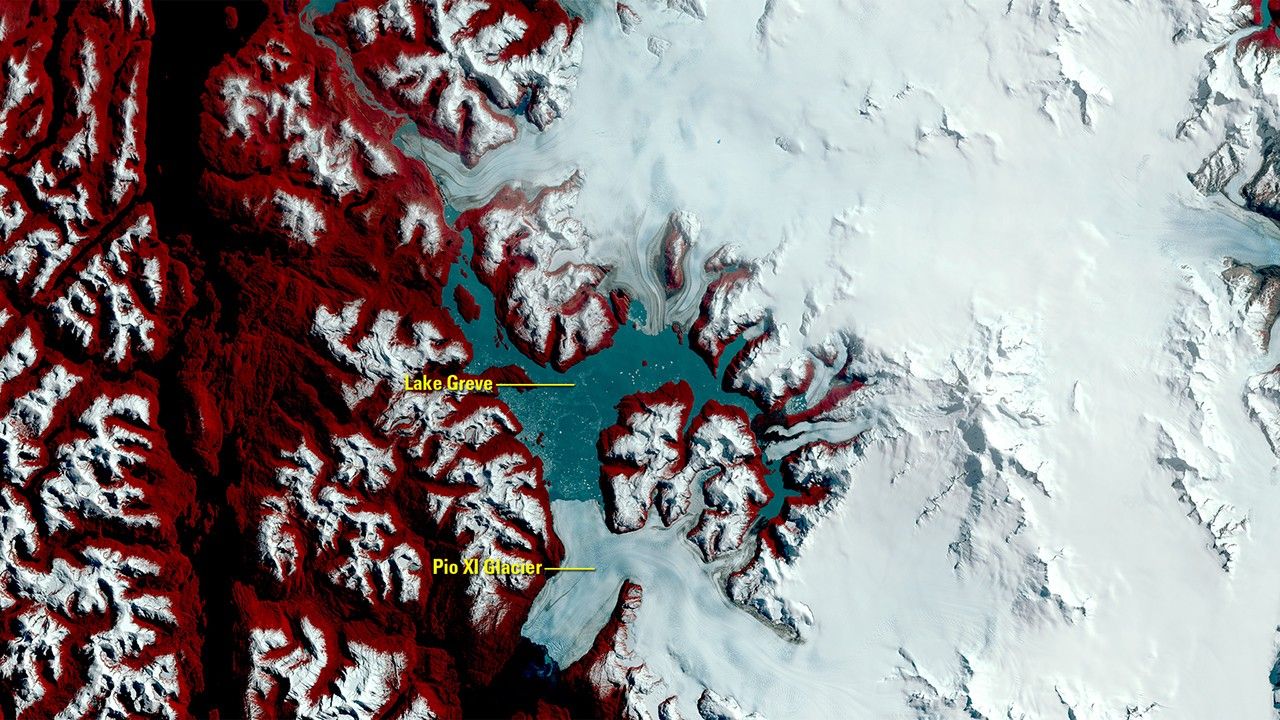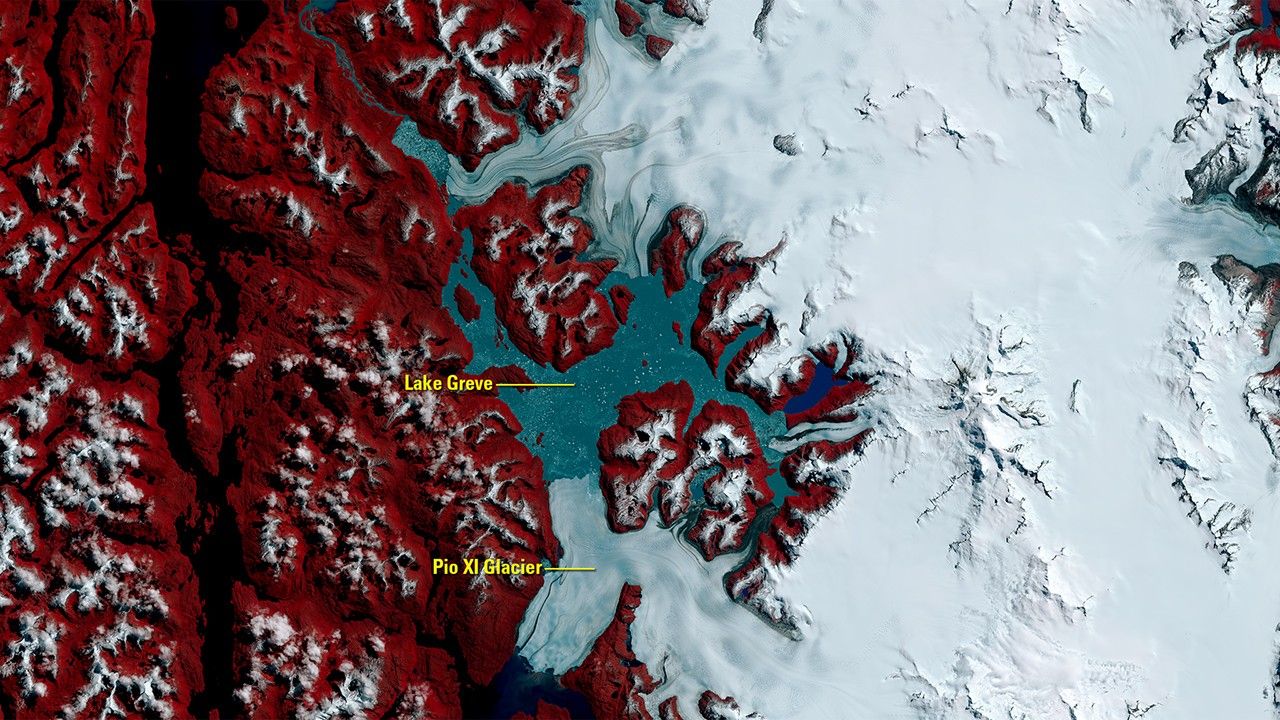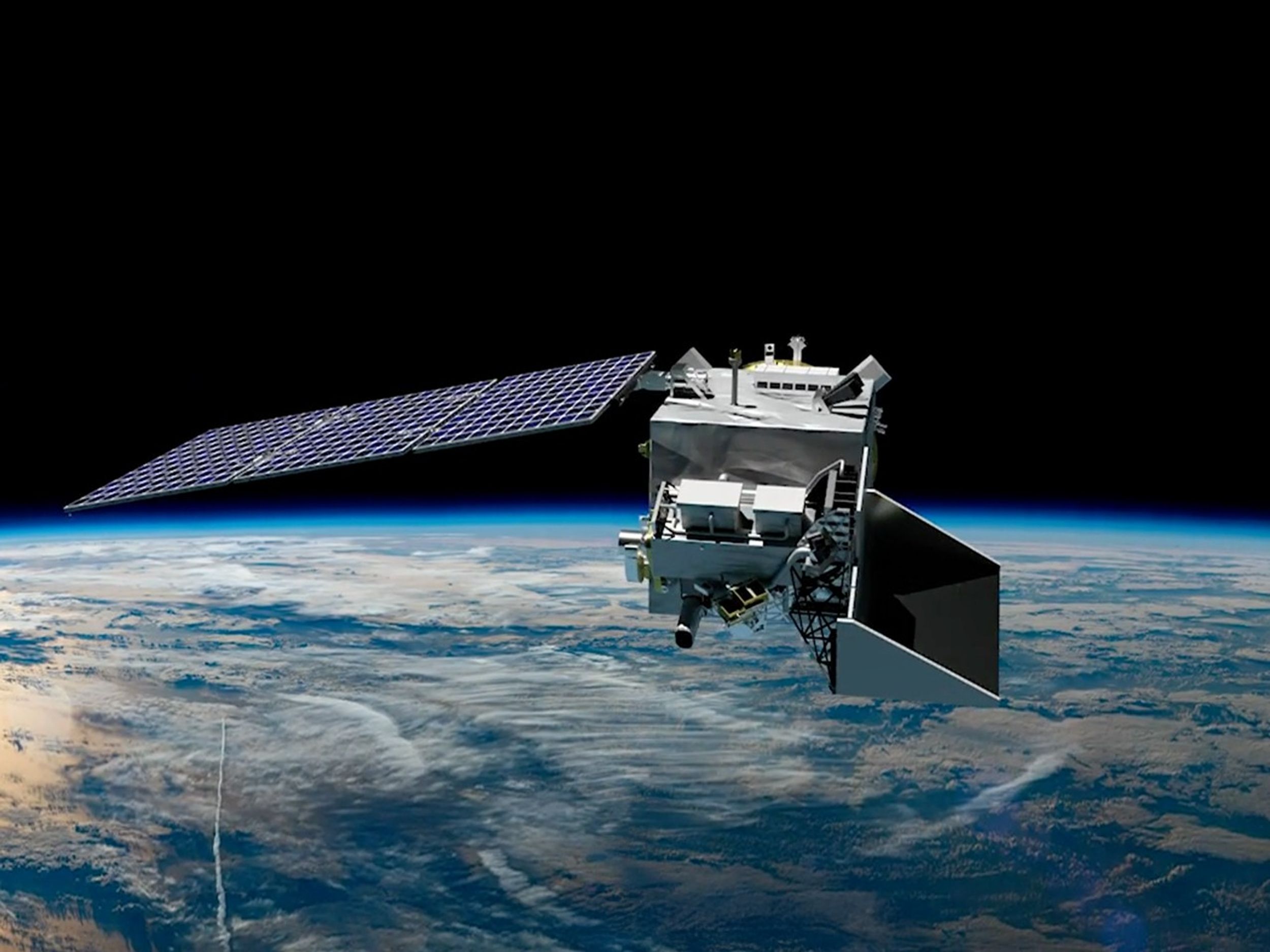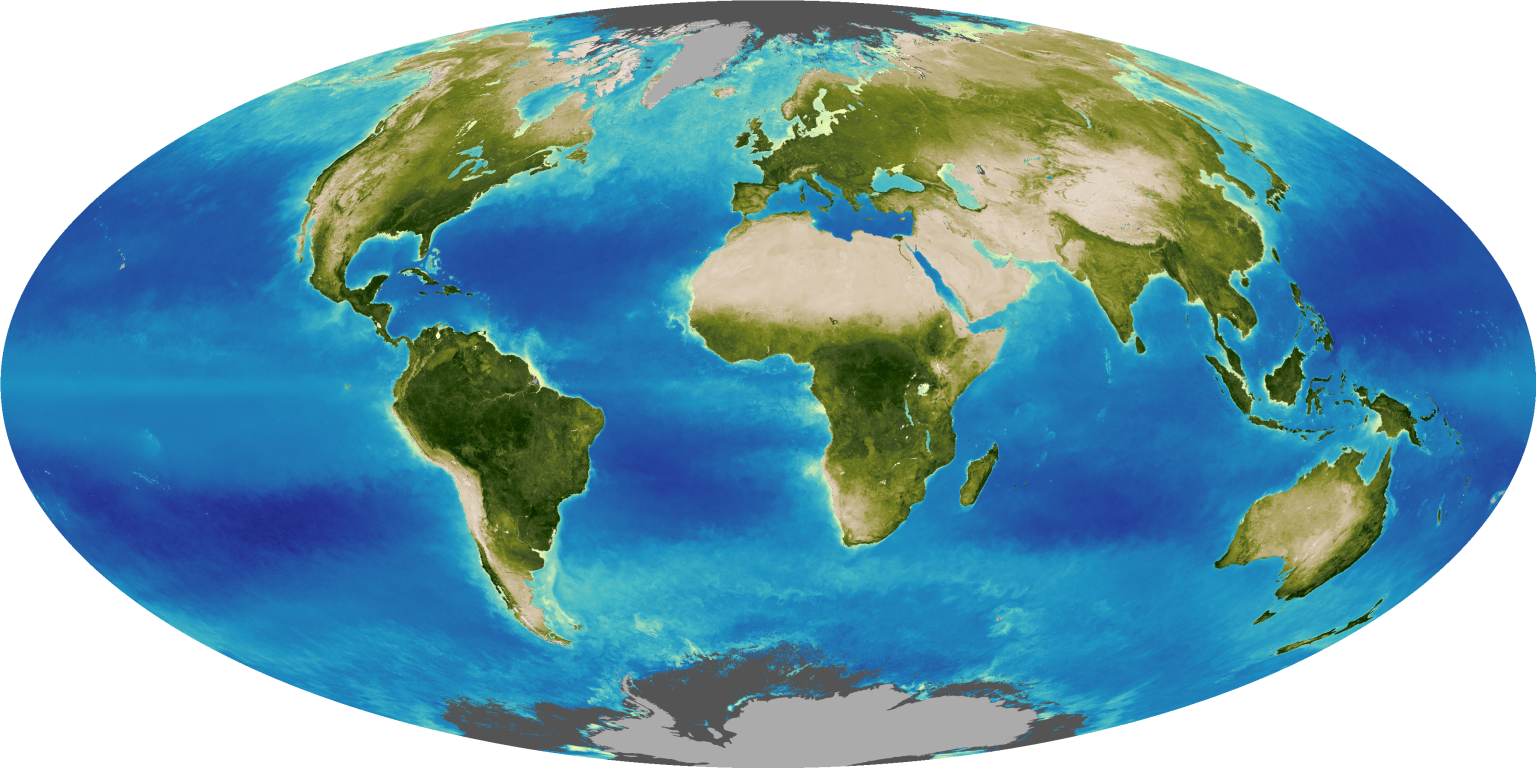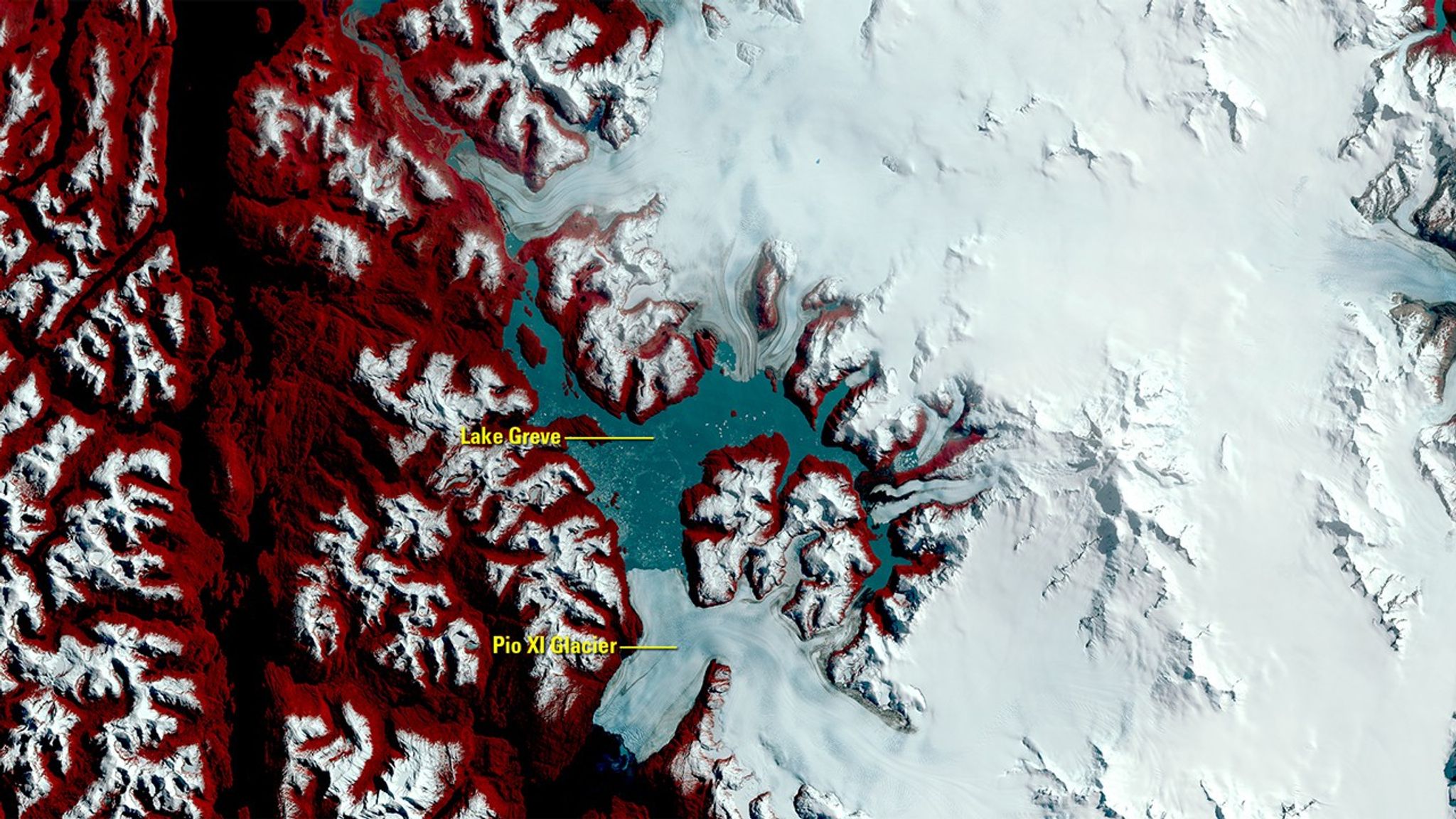
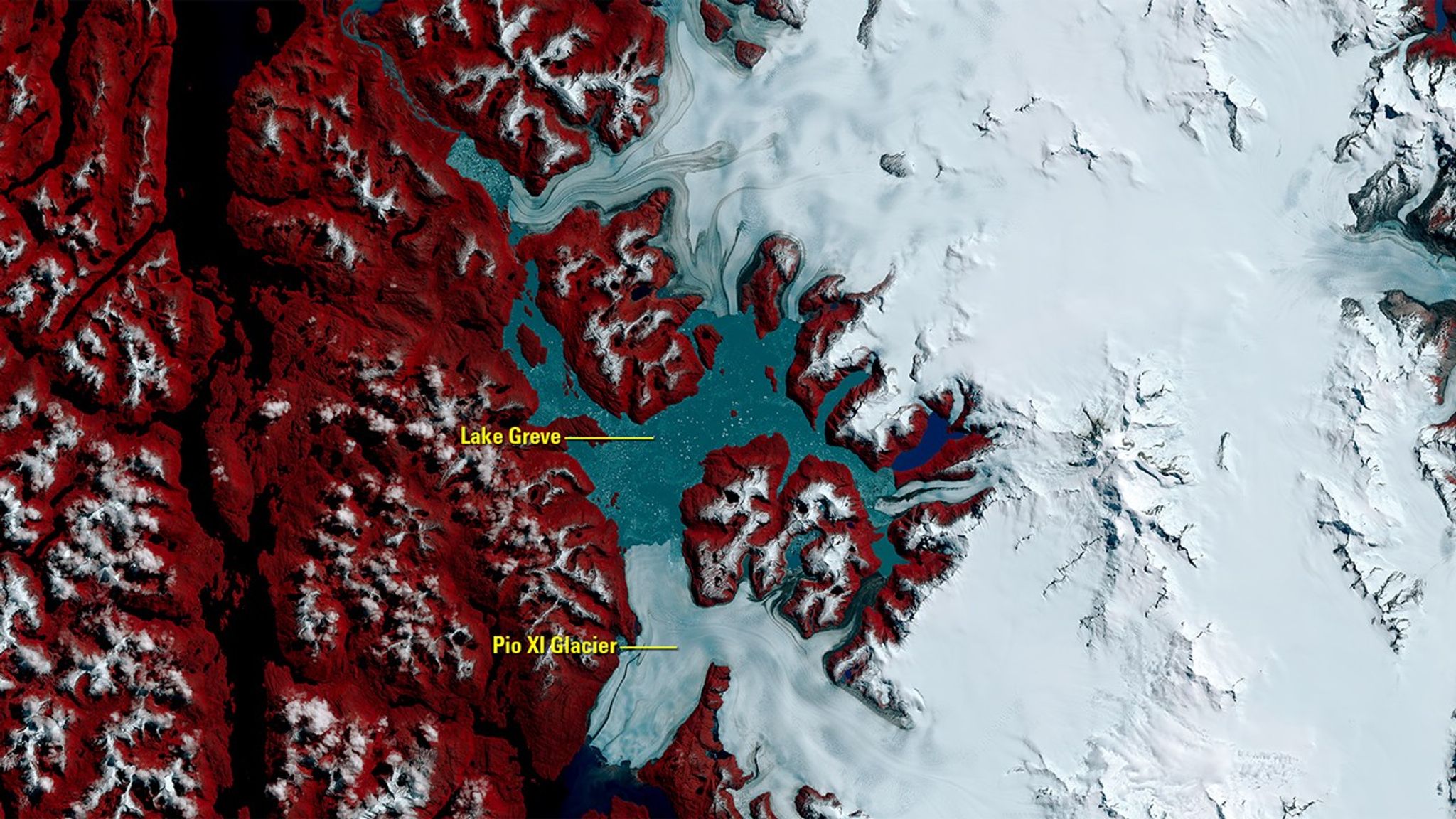
Before and After
As glaciers recede worldwide, one defies trend
October 4, 1986 - October 22, 2016
Many of the world’s glaciers are losing mass and receding, such as those in Chile’s Southern Patagonia Icefield (SPI). However, one of SPI’s glaciers, the Brüggen Glacier (also known as the Pio XI Glacier), is advancing for no clear reason. Between 1998 and 2014, the glacier’s southern front advanced 593 meters (about 1,945 feet), and its northern front, which flows into Lake Greve, advanced 107 meters (about 351 feet). Scientists theorize that activity inside or beneath the glacier could be making it advance, along with factors like flow speed and the lake’s depth. Whatever the cause, the SPI glaciers continue to be closely monitored from space. Images taken by Landsat satellites. Source: U.S. Geological Survey (USGS) Landsat Missions Gallery: “As Glaciers Worldwide Are Retreating, One Defies the Trend”; U.S. Department of the Interior / USGS and NASA.



























